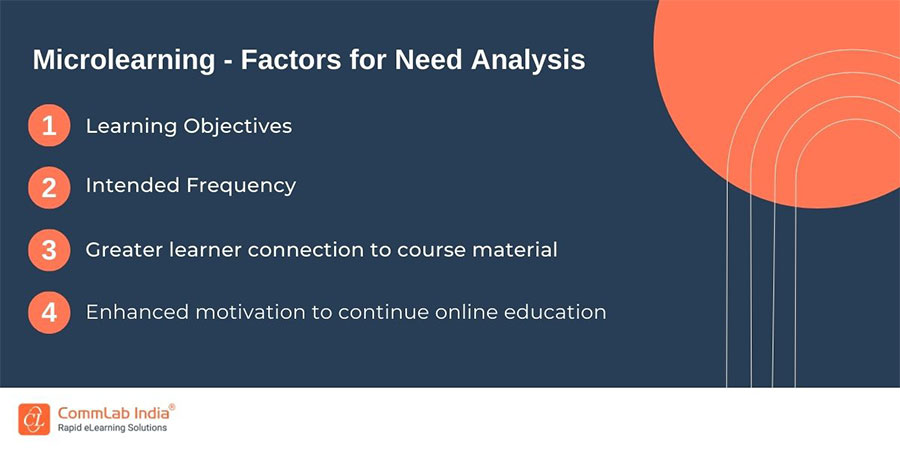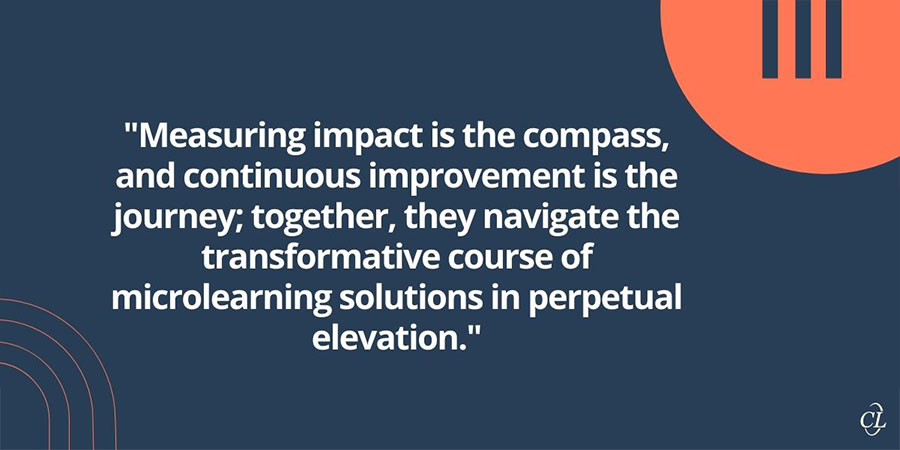How to Craft High-Impact Microlearning Solutions: An Insider’s Guide
Read on as we disclose the secret to a developing and delivering a high impact microlearning module for corporate training.

Ever wondered how the corporate world stays ahead in the race for cutting-edge training? Picture this: a fast-paced landscape craving efficient solutions. Enter microlearning, the unsung hero of corporate training. But here's the twist—how do you ensure these bite-sized modules create a lasting impact? Join us on a journey where we unravel the secrets of crafting high impact microlearning solutions that not only meet but exceed the unique demands and opportunities within the dynamic corporate setting. Get ready to dive into a world where every module is a game-changer!
What is the Key to a High-Impact Microlearning Solution?
Task analysis is the first and most important step to crafting a high-impact microlearning solution. This strategic move that helps develop engaging, bite-sized modules that cater to the specific needs and opportunities of the organization
Microlearning for Corporate Training: Task Analysis
Task analysis is like the roadmap for creating microlearning in corporate training. It helps break down job requirements, and risk factors making the training more focused, practical, and effective. As a part of the task analysis, it is important for you to understand the need/opportunity for microlearning.
As a learning and development (L&D) professional, you will have to identify the specific needs and opportunities within the organization. Engaging stakeholders is essential to gather insights that will shape the entire training process.
For this, you will have to focus on four factors -

1. Learning Objectives
Start by understanding your organization’s learning objectives. What skills or knowledge do you wish to impart through microlearning? Understanding the end goals helps in tailoring the content to meet these objectives efficiently. Therefore, you should put a lot of emphasis on this step.
2. Intended Frequency
Determine the intended frequency of the microlearning modules. Do you want your employees to consume them daily, weekly, or monthly? This information is vital for creating content that aligns with the organization's training schedule.
3. Difficulty of Learning
Explore the difficulty level associated with the learning content. Are the topics complex, requiring in-depth understanding, or are they more straightforward? Based on this knowledge, you will be able to design employee learning content that matches the cognitive abilities of the target audience.
4. Risk Factors of Failing to Learn
Along with the information required for the design, it is also very important to inquire about the potential risk factors associated with failing to learn the specified skills or information. The risk factors may be slump in sales or improper use of equipment. Understanding the consequences of inadequate training enables you to be very mindful in developing content that addresses these risks, promoting a proactive learning approach.
Once you have a comprehensive understanding of the organizational needs and opportunities, the next step is to craft microlearning content that resonates with the audience and delivers tangible results.
→ Access Now: Microlearning – Two-Fold Benefits of the Bite-Sized Approach [Worksheet]
Tips for Crafting Microlearning Content
1. Bite-sized Modules:
The essence of microlearning lies in its bite-sized nature. Break down complex topics into short, focused modules that can be easily consumed. This ensures that learners can absorb information without feeling overwhelmed.
2. Interactive Elements:
Incorporate interactive elements to enhance engagement. Whether it's quizzes, polls, or simulations, interactive components make the learning experience more dynamic and memorable.
Here’s a video that will help you know more about the effectiveness of interactive learning:
3. Real-life Scenarios:
Integrate real-life scenarios in your microlearning modules to contextualize the information. Relatable examples help learners connect theory to practical applications, increasing retention and practical application of knowledge.
4. Personalized Learning Paths:
Recognize that not all learners are the same. Offer personalized learning paths that cater to individual preferences and pace. This fosters a sense of autonomy and ensures that each employee can progress at their own speed.
5. Multimedia Integration:
Leverage multimedia elements to cater to different learning styles. Combining text with visuals, audio, and video creates a multi-sensory experience that caters to a diverse audience.
Now that you are aware of the tips to make your microlearning modules more effective, your next step is to figure out the right form of microlearning to deliver your training content. Let us now discuss the different forms of microlearning...
Different Forms of Microlearning Content
1. Infographics:
Presenting information visually through infographics breaks down complex data into easily digestible graphics. Infographics are effective for conveying statistics, processes, or key concepts.
2. Podcasts:
Delivering content through podcasts allows learners to absorb information while on the go. This auditory format is particularly useful for topics that benefit from verbal explanations or interviews.
3. Interactive eBooks:
Transform traditional learning materials into interactive eBooks. Embed quizzes, clickable elements, and multimedia to create an engaging and immersive reading experience.
4. Mobile Apps:
Develop microlearning mobile apps that provide quick access to relevant content. Apps can include interactive features, push notifications, and progress tracking, making learning more accessible and convenient.
5. Micro-videos:
Short videos, typically ranging from 1 to 5 minutes, are perfect for demonstrating processes, showcasing real-world scenarios, or delivering concise explanations. Video-based learning has proven to be one of the most impactful learning delivery formats in recent times.
Now, your next course of action would be to measure the impact of the microlearning modules developed. Measuring and continuous improvement help ensure the sustained success of microlearning solutions.
Measuring Impact and Continuous Improvement

1. Analytics and Feedback:
Utilize learning analytics tools to track learner progress and engagement. Additionally, gather feedback from users to understand their experience and identify areas for improvement.
2. Iterative Design:
Embrace an iterative design approach. Based on analytics and feedback, continuously refine and update the microlearning content. This ensures that the training remains relevant and effective over time.
3. Assessing Learning Outcomes:
Regularly assess learning outcomes against the predefined objectives. This allows for a data-driven approach to measure the impact of microlearning on employee performance and skill development.
Summing Up
Designing high impact microlearning solutions for corporate training requires a strategic and tailored approach. By identifying the specific needs and opportunities within the organization, crafting engaging content, and implementing a robust measurement framework, organizations can unlock the full potential of microlearning to drive employee development and organizational success.
Still contemplating whether or not to go ahead with microlearning? Explore this worksheet for the two-fold benefits that approach offers:





